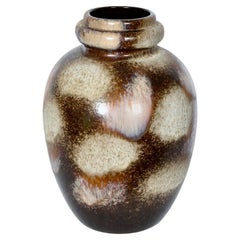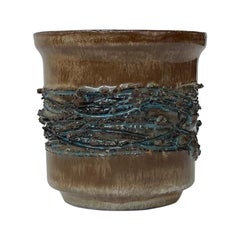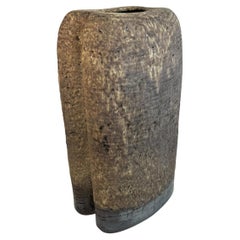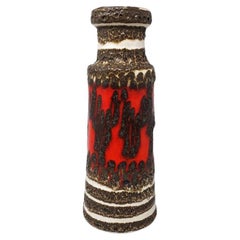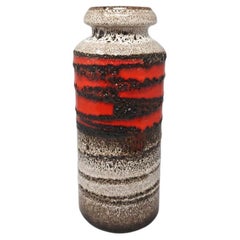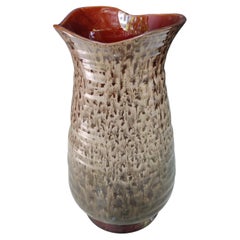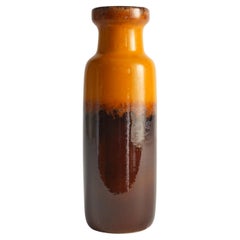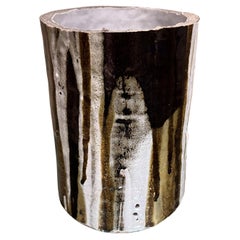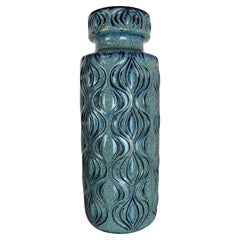1970s Lava Vase
Vintage 1970s German Mid-Century Modern Vases
Ceramic
Vintage 1970s Icelandic Brutalist Vases
Lava
Vintage 1970s Italian Mid-Century Modern Vases
Ceramic
Vintage 1970s Italian Space Age Vases
Ceramic
Vintage 1970s German Space Age Vases
Ceramic
Mid-20th Century American Vases
Pottery
Vintage 1970s German Mid-Century Modern Vases
Stoneware
Vintage 1970s American Mid-Century Modern Vases
Pottery
Late 20th Century German Mid-Century Modern Vases
Ceramic
Late 20th Century German Mid-Century Modern Vases
Ceramic
Late 20th Century German Mid-Century Modern Vases
Ceramic
Late 20th Century German Mid-Century Modern Vases
Ceramic
Vintage 1970s German Mid-Century Modern Vases
Ceramic
Vintage 1970s Scandinavian Brutalist Vases
Stoneware
Late 20th Century German Mid-Century Modern Vases
Ceramic, Pottery, Stoneware
Late 20th Century German Mid-Century Modern Vases
Ceramic
Late 20th Century German Mid-Century Modern Vases
Ceramic
Mid-20th Century German Mid-Century Modern Vases
Ceramic
Late 20th Century German Mid-Century Modern Vases
Ceramic
Late 20th Century German Mid-Century Modern Vases
Ceramic
Late 20th Century German Mid-Century Modern Vases
Ceramic, Pottery, Stoneware
Mid-20th Century German Mid-Century Modern Vases
Ceramic, Pottery
Vintage 1970s German Mid-Century Modern Vases
Ceramic
Late 20th Century German Mid-Century Modern Vases
Ceramic, Pottery, Stoneware
Late 20th Century German Mid-Century Modern Vases
Ceramic, Pottery, Stoneware
Late 20th Century German Mid-Century Modern Vases
Ceramic, Pottery, Stoneware
Late 20th Century German Mid-Century Modern Vases
Ceramic
Late 20th Century German Mid-Century Modern Vases
Ceramic
Late 20th Century German Mid-Century Modern Vases
Ceramic
Late 20th Century German Mid-Century Modern Vases
Ceramic
Late 20th Century German Mid-Century Modern Vases
Ceramic
Late 20th Century German Mid-Century Modern Vases
Ceramic
Mid-20th Century German Mid-Century Modern Vases
Ceramic, Pottery
Mid-20th Century German Mid-Century Modern Vases
Ceramic, Pottery
Late 20th Century German Mid-Century Modern Vases
Ceramic, Pottery, Stoneware
Late 20th Century German Mid-Century Modern Vases
Ceramic, Pottery, Stoneware
Late 20th Century German Mid-Century Modern Vases
Ceramic, Pottery, Stoneware
Late 20th Century German Mid-Century Modern Vases
Ceramic, Pottery, Stoneware
Mid-20th Century German Mid-Century Modern Vases
Ceramic
Mid-20th Century German Mid-Century Modern Vases
Ceramic
Late 20th Century German Mid-Century Modern Vases
Ceramic
Late 20th Century German Mid-Century Modern Vases
Ceramic, Pottery, Stoneware
Mid-20th Century German Mid-Century Modern Vases
Ceramic
Mid-20th Century German Mid-Century Modern Vases
Ceramic
Late 20th Century German Mid-Century Modern Vases
Ceramic, Pottery, Stoneware
Late 20th Century German Mid-Century Modern Vases
Ceramic, Pottery, Stoneware
20th Century German Mid-Century Modern Vases
Ceramic
Late 20th Century German Mid-Century Modern Vases
Ceramic, Pottery, Stoneware
Vintage 1970s German Mid-Century Modern Vases
Ceramic
Late 20th Century German Mid-Century Modern Vases
Ceramic, Pottery, Stoneware
Mid-20th Century German Mid-Century Modern Vases
Ceramic
Late 20th Century German Mid-Century Modern Vases
Ceramic, Pottery, Stoneware
Late 20th Century German Mid-Century Modern Vases
Ceramic, Pottery, Stoneware
Late 20th Century German Mid-Century Modern Vases
Ceramic, Pottery, Stoneware
Late 20th Century German Mid-Century Modern Vases
Ceramic, Pottery, Stoneware
Mid-20th Century Mid-Century Modern Vases
Ceramic, Pottery, Terracotta
Late 20th Century German Mid-Century Modern Vases
Ceramic, Pottery, Stoneware
Late 20th Century German Mid-Century Modern Vases
Ceramic, Pottery, Stoneware
- 1
1970s Lava Vase For Sale on 1stDibs
How Much is a 1970s Lava Vase?
A Close Look at Mid-century-modern Furniture
Organically shaped, clean-lined and elegantly simple are three terms that well describe vintage mid-century modern furniture. The style, which emerged primarily in the years following World War II, is characterized by pieces that were conceived and made in an energetic, optimistic spirit by creators who believed that good design was an essential part of good living.
ORIGINS OF MID-CENTURY MODERN FURNITURE DESIGN
- Emerged during the mid-20th century
- Informed by European modernism, Bauhaus, International style, Scandinavian modernism and Frank Lloyd Wright’s architecture
- A heyday of innovation in postwar America
- Experimentation with new ideas, new materials and new forms flourished in Scandinavia, Italy, the former Czechoslovakia and elsewhere in Europe
CHARACTERISTICS OF MID-CENTURY MODERN FURNITURE DESIGN
- Simplicity, organic forms, clean lines
- A blend of neutral and bold Pop art colors
- Use of natural and man-made materials — alluring woods such as teak, rosewood and oak; steel, fiberglass and molded plywood
- Light-filled spaces with colorful upholstery
- Glass walls and an emphasis on the outdoors
- Promotion of functionality
MID-CENTURY MODERN FURNITURE DESIGNERS TO KNOW
- Charles and Ray Eames
- Eero Saarinen
- Milo Baughman
- Florence Knoll
- Harry Bertoia
- Isamu Noguchi
- George Nelson
- Danish modernists Hans Wegner and Arne Jacobsen, whose emphasis on natural materials and craftsmanship influenced American designers and vice versa
ICONIC MID-CENTURY MODERN FURNITURE DESIGNS
- Eames lounge chair
- Nelson daybed
- Florence Knoll sofa
- Egg chair
- Womb chair
- Noguchi coffee table
- Barcelona chair
VINTAGE MID-CENTURY MODERN FURNITURE ON 1STDIBS
The mid-century modern era saw leagues of postwar American architects and designers animated by new ideas and new technology. The lean, functionalist International-style architecture of Le Corbusier and Bauhaus eminences Ludwig Mies van der Rohe and Walter Gropius had been promoted in the United States during the 1930s by Philip Johnson and others. New building techniques, such as “post-and-beam” construction, allowed the International-style schemes to be realized on a small scale in open-plan houses with long walls of glass.
Materials developed for wartime use became available for domestic goods and were incorporated into mid-century modern furniture designs. Charles and Ray Eames and Eero Saarinen, who had experimented extensively with molded plywood, eagerly embraced fiberglass for pieces such as the La Chaise and the Womb chair, respectively.
Architect, writer and designer George Nelson created with his team shades for the Bubble lamp using a new translucent polymer skin and, as design director at Herman Miller, recruited the Eameses, Alexander Girard and others for projects at the legendary Michigan furniture manufacturer.
Harry Bertoia and Isamu Noguchi devised chairs and tables built of wire mesh and wire struts. Materials were repurposed too: The Danish-born designer Jens Risom created a line of chairs using surplus parachute straps for webbed seats and backrests.
The Risom lounge chair was among the first pieces of furniture commissioned and produced by celebrated manufacturer Knoll, a chief influencer in the rise of modern design in the United States, thanks to the work of Florence Knoll, the pioneering architect and designer who made the firm a leader in its field. The seating that Knoll created for office spaces — as well as pieces designed by Florence initially for commercial clients — soon became desirable for the home.
As the demand for casual, uncluttered furnishings grew, more mid-century furniture designers caught the spirit.
Classically oriented creators such as Edward Wormley, house designer for Dunbar Inc., offered such pieces as the sinuous Listen to Me chaise; the British expatriate T.H. Robsjohn-Gibbings switched gears, creating items such as the tiered, biomorphic Mesa table. There were Young Turks such as Paul McCobb, who designed holistic groups of sleek, blond wood furniture, and Milo Baughman, who espoused a West Coast aesthetic in minimalist teak dining tables and lushly upholstered chairs and sofas with angular steel frames.
Generations turn over, and mid-century modern remains arguably the most popular style going. As the collection of vintage mid-century modern chairs, dressers, coffee tables and other furniture for the living room, dining room, bedroom and elsewhere on 1stDibs demonstrates, this period saw one of the most delightful and dramatic flowerings of creativity in design history.
Finding the Right Vases for You
Whether it’s a Chinese Han dynasty glazed ceramic wine vessel, a work of Murano glass or a hand-painted Scandinavian modern stoneware piece, a fine vase brings a piece of history into your space as much as it adds a sophisticated dynamic.
Like sculptures or paintings, antique and vintage vases are considered works of fine art. Once offered as tributes to ancient rulers, vases continue to be gifted to heads of state today. Over time, decorative porcelain vases have become family heirlooms to be displayed prominently in our homes — loved pieces treasured from generation to generation.
The functional value of vases is well known. They were traditionally utilized as vessels for carrying dry goods or liquids, so some have handles and feature an opening at the top (where they flare back out). While artists have explored wildly sculptural alternatives over time, the most conventional vase shape is characterized by a bulbous base and a body with shoulders where the form curves inward.
Owing to their intrinsic functionality, vases are quite possibly versatile in ways few other art forms can match. They’re typically taller than they are wide. Some have a neck that offers height and is ideal for the stems of cut flowers. To pair with your mid-century modern decor, the right vase will be an elegant receptacle for leafy snake plants on your teak dining table, or, in the case of welcoming guests on your doorstep, a large ceramic floor vase for long tree branches or sticks — perhaps one crafted in the Art Nouveau style — works wonders.
Interior designers include vases of every type, size and style in their projects — be the canvas indoors or outdoors — often introducing a splash of color and a range of textures to an entryway or merely calling attention to nature’s asymmetries by bringing more organically shaped decorative objects into a home.
On 1stDibs, you can browse our collection of vases by material, including ceramic, glass, porcelain and more. Sizes range from tiny bud vases to massive statement pieces and every size in between.
- What is a fat lava vase?1 Answer1stDibs ExpertMarch 22, 2022A fat lava vase is a nickname for West Germany pottery. The vases feature very thick flowing glazes. When eBay first came into popularity, German sellers often mistranslated their descriptions, calling the finish fat instead of thick. Collectors soon adopted the term. Shop a variety of fat lava vases on 1stDibs.
- What was worn in the 1970s?1 Answer1stDibs ExpertFebruary 22, 2021Fashion during the 1970s included lots of T-shirts, cardigans, kimonos, graphic tees, jeans, khakis, and vintage clothes. In the mid-1970s, other fashion highlights included puffy skirts and shirts with flowy sleeves.
- 1stDibs ExpertApril 5, 2022Yes, sequins were indeed popular in the 1970s and could be seen on the dancefloors and discos of the time, along with other popular fabrics like velvet and satin. Sequins and hot pants were the go-to outfit of the disco-glam decade. Shop iconic vintage and contemporary sequin clothing from some of the world’s top boutiques on 1stDibs.
- Was velvet used in the 1970s?1 Answer1stDibs ExpertJune 15, 2023Yes, velvet was used in the 1970s. Fashion designers used the fabric to produce dresses, bell bottoms, flowy kimonos and other pieces. Furniture makers often used it as the upholstery on sofas and armchairs. On 1stDibs, shop a variety of pieces from the 1970s.
- What is 1970s furniture called?1 Answer1stDibs ExpertMarch 15, 2024What 1970s furniture is called varies. Generally, you may see pieces produced during the decade classified as "vintage" or "retro" furniture. During the 1970s, some makers continued to produce furniture that boasted the characteristics of mid-century modern works. The disco era yielded furnishings with organic, often rounded shapes, unadorned silhouettes, clean lines and a mix of materials. The showy leather furniture of the 1970s, which was both sexy and comfortable, is seeing a resurgence in today’s homes. Shop a wide variety of vintage 1970s furniture on 1stDibs.
- Are the 1970s mid-century?1 Answer1stDibs ExpertFebruary 17, 2023No, the 1970s are generally not considered to fall within the era identified as mid-century. With respect to mid-century modern design, while there is some debate between collectors and design experts about the specific time period that saw the emergence of the style, most furniture enthusiasts agree that by the late 1960s, interest in MCM had largely declined. Writer Cara Greenberg, who coined the term “mid-century modernism,” suggests that “the period from the end of World War II to 1960 – from V-J Day to JFK – was the heyday of innovative furniture design in America.” Mid-century modern furniture is characterized by clean lines and inviting, organic shapes. Furniture makers of the era believed that good design was an essential part of good living. Find a variety of vintage mid-century modern furniture and decorative objects on 1stDibs.
- 1stDibs ExpertApril 5, 2022To tell if a dress is from the 1960s or 1970s, first look for a label. You may be able to determine the approximate date of the dress simply by researching the designer using reputable online sources. Also, check the zippers. Dresses from the 1960s will usually have metal or nylon zippers. Ones from the 1970s are more likely to be plastic. You'll find a large selection of vintage dresses on 1stDibs.
- 1stDibs ExpertApril 5, 2022Go-go boots were fashionable in the late 1960s through the 1970s. A calf-length to knee-length boot became synonymous with 1960s and 1970s fashion and is still highly coveted today by fashion enthusiasts. Shop a wide range of vintage go-go boots on 1stDibs.
- 1stDibs ExpertMay 5, 2023Which clothing style was most popular in the discos in the 1970s is open to debate. Some of the trends of the discotheque scene included sleeveless, sequined tops paired with bell bottoms and knee-length halter dresses topped off with tall go-go boots. For men, jumpsuits and leisure suits were the favorite looks. Both men and women often wore shoes with chunky heels and thick platforms. On 1stDibs, find an assortment of 1970s vintage clothing and accessories.
- 1stDibs ExpertJanuary 27, 2025The designer who became famous with her wrap dresses in the 1970s is Diane von Furstenberg. She debuted her first example in 1974. When creating the Wrap dress, von Furstenberg drew inspiration from the skirts worn by ballerinas. In celebration of the 40th anniversary of the now-iconic dress, an exhibit called Diane von Furstenberg: Journey of a Dress was held at museums in the United States and abroad. On 1stDibs, explore a range of Diane von Furstenberg apparel and accessories.
- 1stDibs ExpertApril 5, 2022After the success of his “Sol” series in the 1960s, Richard Anuszkiewicz began to focus on his “Centered Square” designs in the mid-1970s. He used interacting colors to change the perception of the art in the eye of the viewer. You can shop a selection of Richard Anuszkiewicz pieces from some of the world’s top art dealers on 1stDibs.
Read More
How Noguchi Elevated Ashtrays to Objets d’Art
Smoking might have fallen out of fashion, but these ashtrays have enduring design appeal.
Jeff Andrews Captures Old Hollywood Glamour in His Cinematic Spaces
Having created extravagant homes for reality TV’s biggest stars, the designer is stepping into the spotlight with his first book.
Tapio Wirkkala Bucked the Trends of Mid-Century Nordic Design
The Finnish talent created nature-inspired pieces, from furniture to jewelry, with phenomenal staying power.
